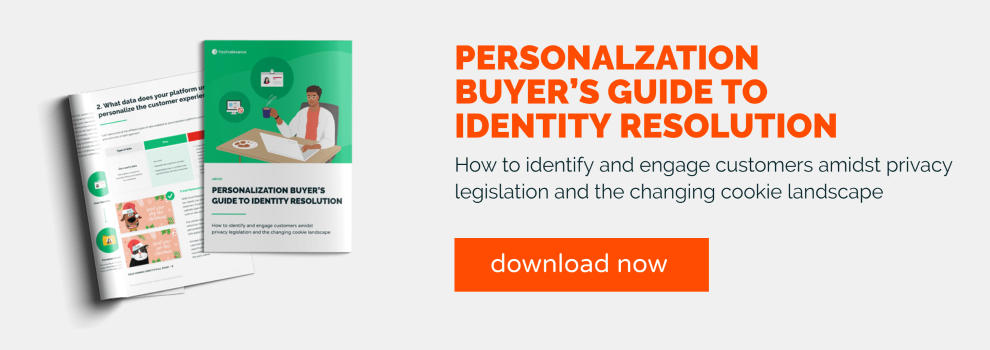Personalization can be powered by three main types of data: zero-party data, first-party data and third-party data.
First-party customer data – such as actions a customer takes across your website – is the backbone of any good personalization strategy. Packed full of behavioral insights and implied interest, it allows marketers to personalize the shopper’s experience across all stages of the customer journey.
But if you want to enhance your personalization with additional insights that first party data can’t provide, consider using zero-party data – the data which a customer intentionally and proactively shares with a brand. While first-party data helps marketers infer a customer’s interests and preferences, zero-party customer journey data provides explicit information to add color to customer profiles.
When looking for personalization technology, it’s best to look for a solution that uses a combination of zero-party and first-party data to power your personalization, steering clear of solutions that rely on third-party data due to potential compliance and quality issues.
In this post, we’ll cover what zero-party data is, best practices and three ways to enhance your personalization with zero-party data.
What is zero-party data?
Zero-party data is customer supplied data. In other words, it’s information a customer provides freely and explicitly to a company.
Pros:
Zero-party data is generally accurate, it respects the customer’s privacy and organizations are in control of the questions they ask their customers.
Cons:
Customers expect something in return for the customer data they have provided, so make sure you can meet these expectations and personalize the customer experience and customer journey accordingly. Almost 1 in 4 consumers (21%) get annoyed by marketing emails that ignore the zero-party data they provided, so it’s important to consider whether you can deliver a personalized experience before collecting zero-party data.
There’s also a potential disconnect between the answers a customer gives and what they actually think. Research from Forrester suggests that customers might be overwhelmed when asked to provide too much information at one time, which might lead to them inputting false information just to get through the process. Keep your list of questions short and sweet to avoid clogging your database with inaccurate information and increase customer satisfaction.
Zero-party data best practices
With data protection legislations and increasing consumer concerns over privacy, businesses need to ensure they’re doing everything they can to follow applicable legislation and ease consumer anxiety.
Whilst zero-party data is freely given by the consumer, be honest and clear about how that data will be used, as Viovet do in this example.
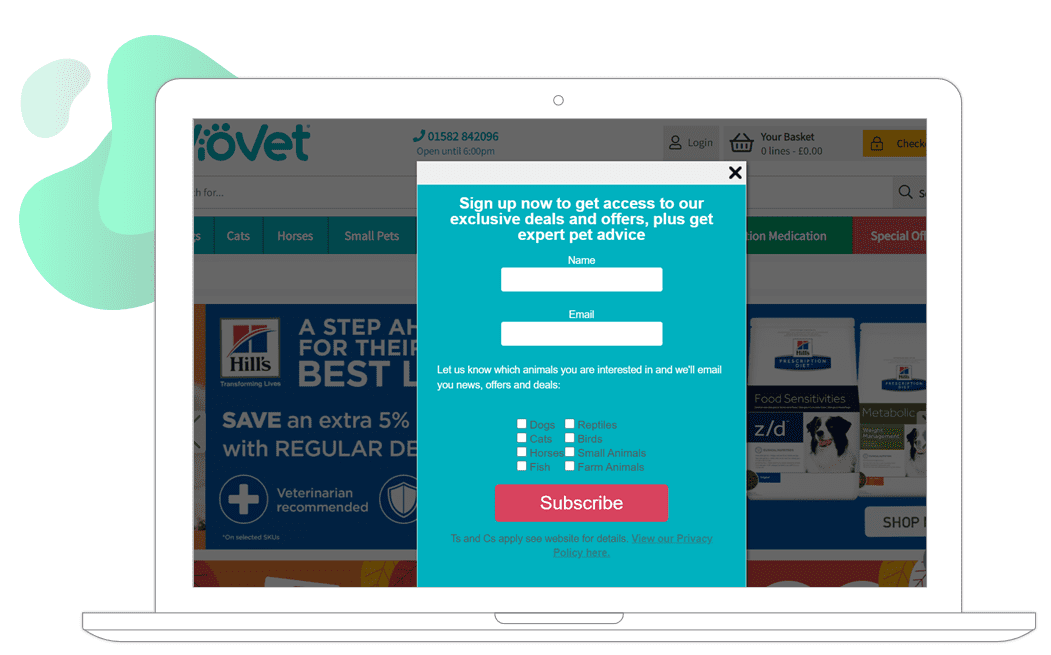
Include a preference center on your site to show the data that’s been collected so far and how that data is used, with the option for customers to update their preferences directly. Buyagift lets customers control their data via their preference center, which improves the customer experience.
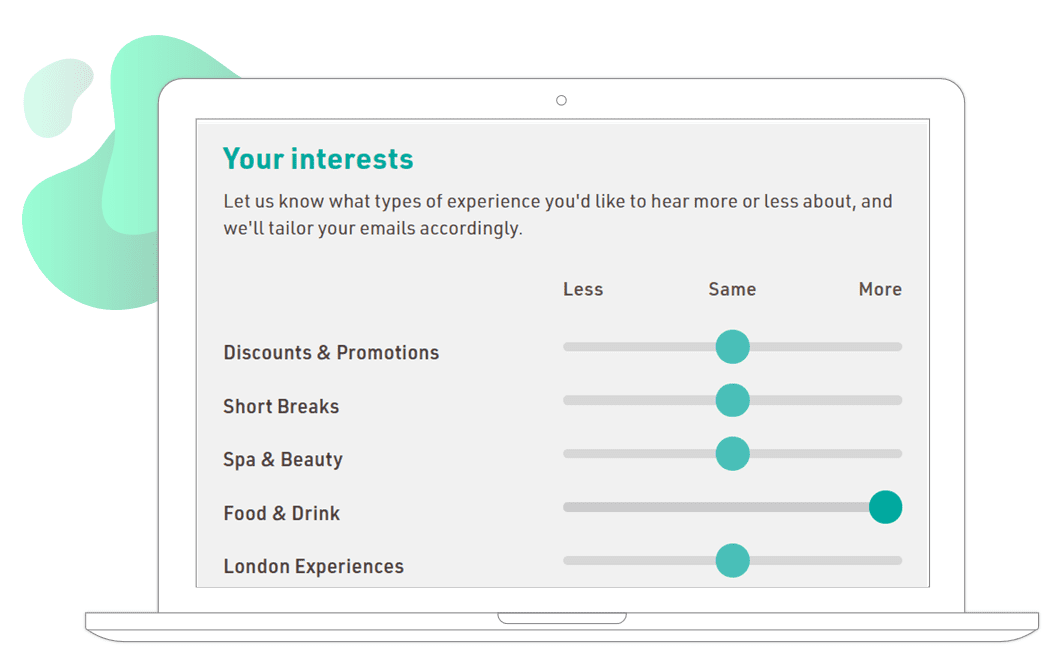
3 ways to enhance your personalization with zero-party data
When it comes to using zero-party data to enhance your personalization efforts, the sky’s the limit. There are plenty of creative ways to collect it and even more ways to use it. Here are three ideas to get you started.
1) Personalized hero banner
When thinking of the first steps in customer journeys, the hero banner is often the first thing that visitors see when they arrive at your online store. Think of it as the headline for your website: the bit that grabs customers’ attention and tells them very quickly if it’s worth staying. The same goes for your marketing emails. An engaging hero banner could be the difference between encouraging your recipient to read on or hit delete.
Transforming your banner into a piece of dynamic content allows you to show each customer the image that’s most likely to spark their interest, build their confidence and keep them on your website.
Getting Personal captures zero-party data – in this case the customer’s name – and uses this customer journey data to personalize their email marketing with dynamic hero banners that pull in their name.
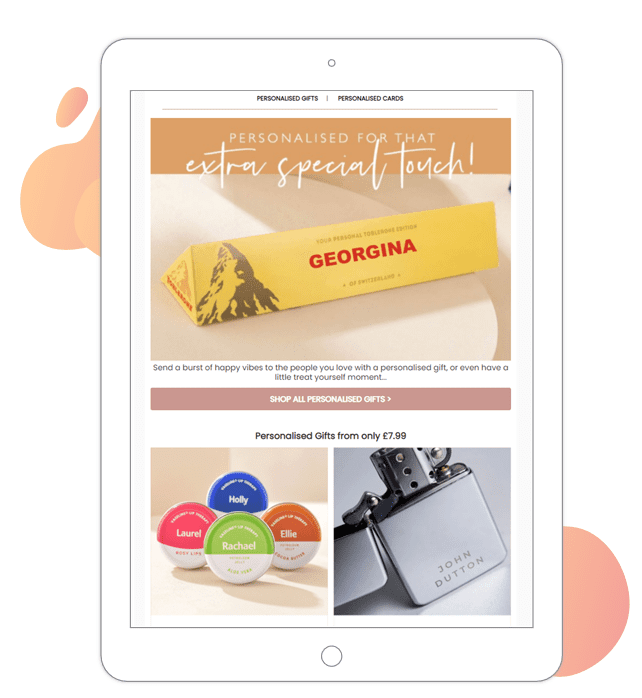
Getting Personal has seen a 37% sales uplift with dynamic name personalization, as well as a 15% increase in click-through rates and a 7% increase in conversion rates.
2) Personalized product recommendations
Personalized product recommendations are a key way to tailor customer journeys and show shoppers products that are most likely to catch their attention. In fact, almost 1 in 4 consumers (23%) want retailers to make it easy for them to discover more products they might like.
When combined with first-party behavioral data such as frequently purchased or browsed products, the information gleaned from zero-party data can help marketers boost the effectiveness of their product recommendations and increase the amount of loyal customers you have.
Animed Direct uses zero-party data – the type of pet the customer owns – to personalize the product recommendations displayed in their marketing emails, in this case showcasing dog-related products.
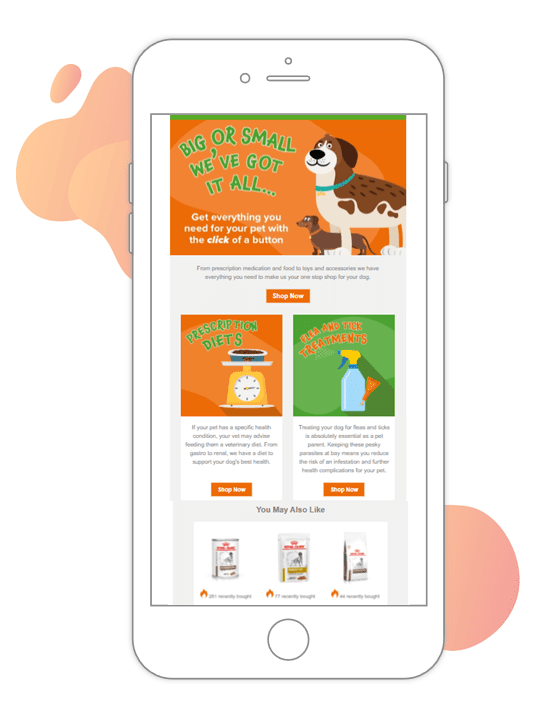
3) Personalized coupons
Most of us have eagerly shared our date of birth with retailers, restaurants and brands in exchange for the promise of birthday discounts and treats. This information enables marketers to delight their customers each year by sending them a token of appreciation. And since birthday emails generate 342% higher revenue per email than promotional emails, the customer won’t be the only one celebrating.
Marketers can boost the revenue-generating potential of birthdays by combining zero-party data with first party data. For example, try sending your customer a personalized coupon on their birthday to spend on their most frequently browsed or purchased product category. A targeted offer such as this is more likely to resonate with customers and lead to a conversion, enhancing the customer lifetime value.
Make sure your coupons follow customers from triggered and bulk emails to your website, and vice versa, to increase the exposure and redemption rate.
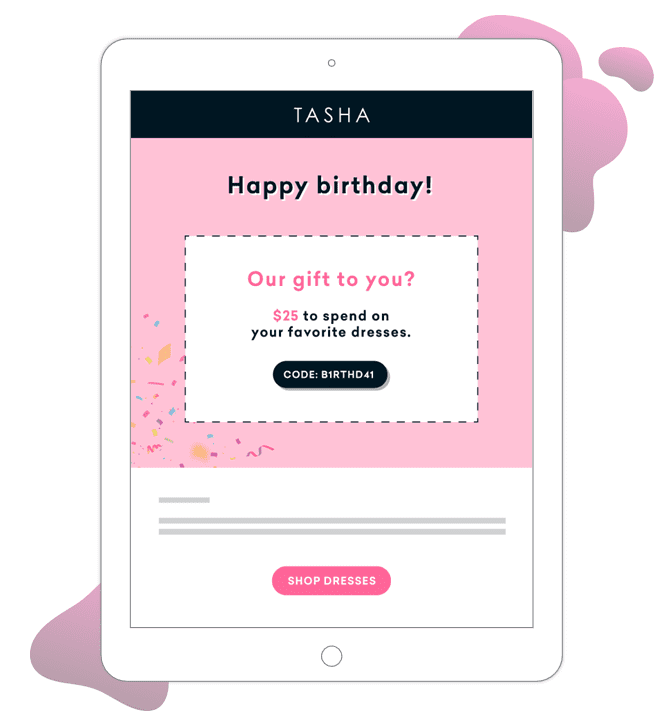
By capturing customer motivations and customer interactions whilst they go through the customer journey, interests and preferences at scale, marketers can build upon first-party data to enhance their personalization. Be honest and clear about how the data will be used and make sure customers have the option to change their selections via a preference center. Keep your list of questions short and sweet to avoid overwhelming customers and be sure that you can deliver the personalized experience customers will expect in exchange for sharing their data.
Once you have the best practices in place, try out our three personalization ideas to convert customers with a tailored experience that’s guaranteed to delight.
The ability to identify users is a key requirement for creating a personalized customer experience for each individual customer, and for creating an inspiring customer journey, which is why a good identity strategy is among a business’ most valuable assets.
But with disparate data sources, consumer concerns over privacy and a cookie apocalypse on the horizon, businesses need to ensure the personalization software they implement makes use of a customer data platform that will help them future-proof their identity strategies in order to continue benefiting from personalization.
Learn more about personalization and identity resolution and discover five key questions to ask your personalization platform to ensure your personalization efforts are future-proof in our Personalization Buyer’s Guide to Identity Resolution.



